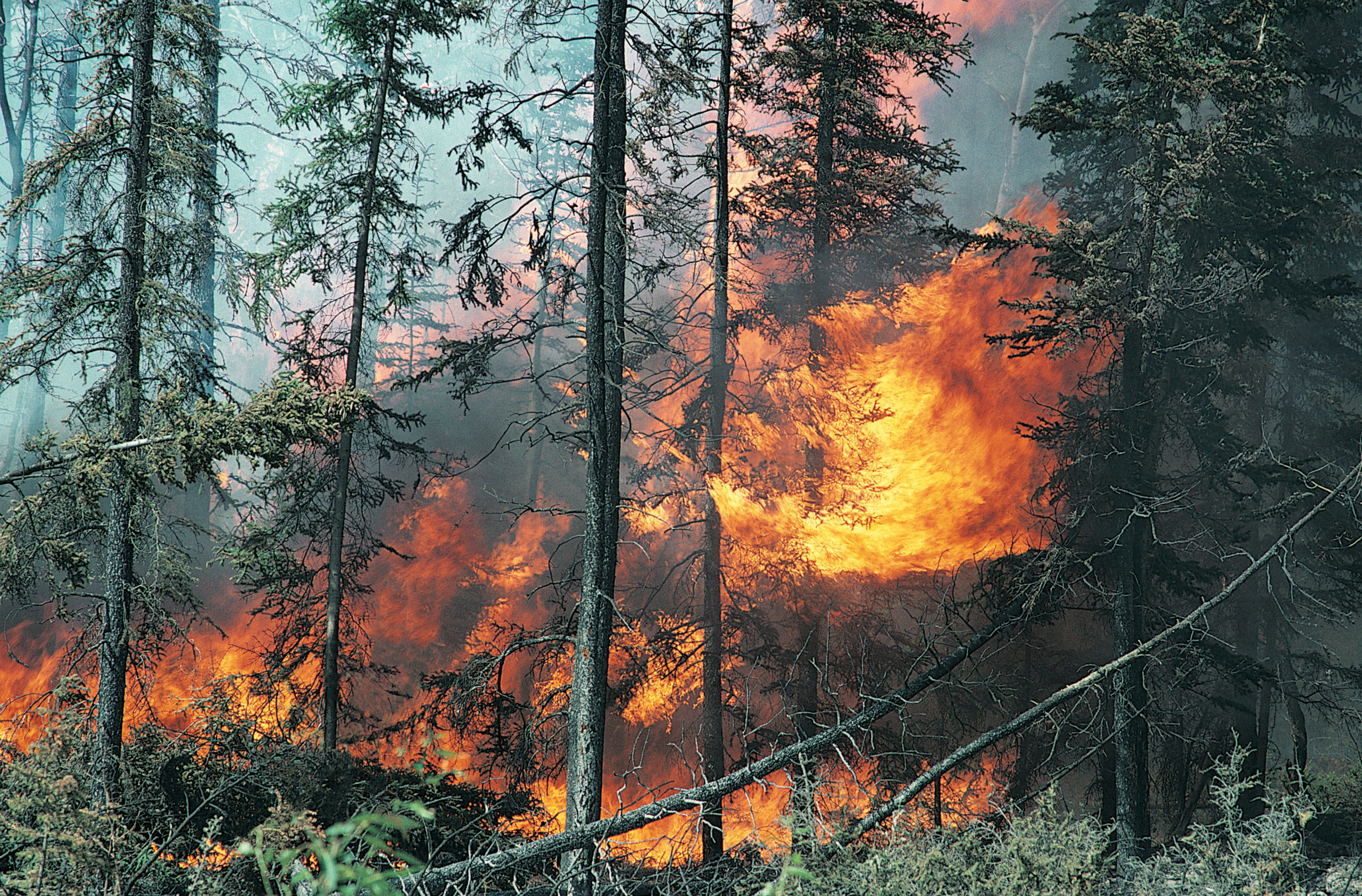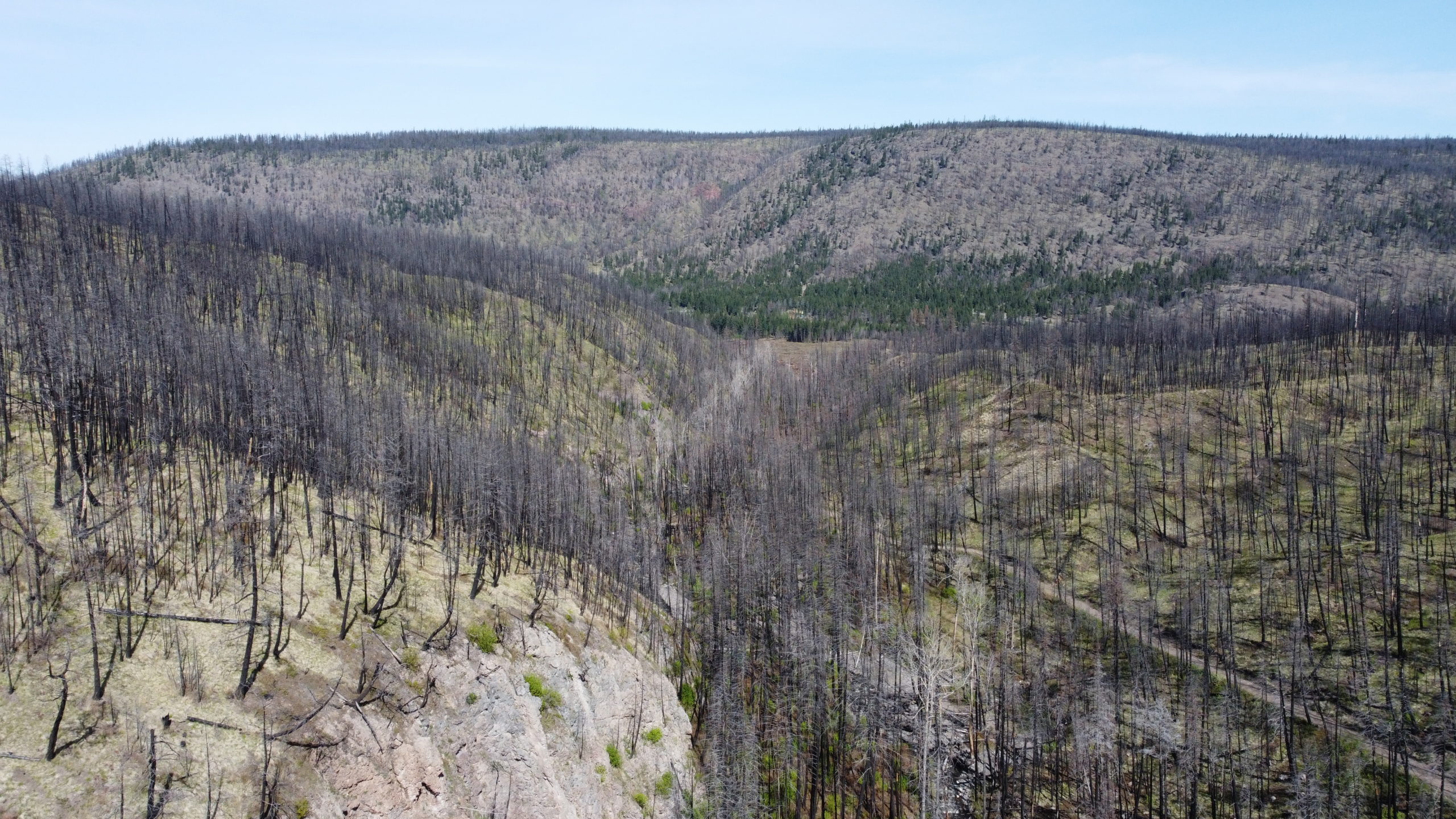Wildfires, wildlife and what we can do
For months now, we’ve been witness to a country on fire. From Vancouver Island to Newfoundland, nearly every part of Canada has experienced what’s been declared the country’s worst wildfire season on record.
Emily Giles, WWF-Canada’s senior species specialist, explains why this is happening, how it’s affecting wildlife and why restoration is so important.

We are seeing a lot more fire this year than in previous years, and we’re seeing records set in many places. Forests are not as resistant to fires as they once were. Climate change is altering rainfall cycles and creating hotter and drier conditions around the country, factors which increase the risk of more frequent and more severe wildfires.
Other factors can affect fire, too. For example, in B.C., pine beetles can now survive the winter because of milder weather from global warming. These beetles kill standing trees, essentially creating areas with ample kindling that become perfect fire conditions. Ongoing deforestation further contributes to drier, more combustible conditions.
But as hard as it is to hear about these wildfires and the effects on people and wildlife, it’s important to remember that some fires are a natural part of nature and ecosystem processes. Many plants and animals have adapted to fire, and a few even depend on fire for parts of their life cycles.
Some animals are also really good at getting away from threats like fires — large mammals and birds can move quickly once they detect fire, while smaller or less mobile species, such as frogs, turtles, snakes and small mammals, can use underground burrows to protect themselves. But as these fires also grow in size and intensity, it becomes increasingly difficult for these animals to escape in time.
The ones that do survive must either move to a new area or adapt to the fire-ravaged area and then find adequate food and shelter. This could be particularly difficult for territorial mammals that require a lot of space like the wolverine, which is a threatened species that lives in Canada’s boreal forest, and if displaced would have to compete with other wolverines for habitat. Animals are also affected by smoke from fires just like us — although there aren’t many, studies looking at the effects of smoke on wildlife show that they’re susceptible to acute and chronic health issues.
Of course, the species and populations most vulnerable to fires are the ones already at risk from other threats such as habitat loss, pollution, invasive species and overexploitation. Any time we have a population that is low, it is particularly vulnerable because a single event like a fire can have big impact on its small population. Species at risk like woodland caribou or spotted owl that depend on mature or old-growth forests, and may see further declines as these habitats are affected. Woodland caribou rely on lichen as a food source, but lichens burn quite easily and recover slowly after a fire, further limiting suitable habitat.

One important way we can mitigate these fire-related impacts is habitat restoration. We can help to build more climate-resistant forests through species diversity. For example, WWF-Canada is supporting efforts by the Secwepemcúl’ecw Restoration and Stewardship Society (SRSS) to build resilience by planting a greater diversity of trees, especially hardwoods, as they reforest Elephant Hill, the site of one of B.C.’s worst-ever wildfires, and other adjacent fire-impacted sites. SRSS, which planted 450,000 trees so far this year, is taking these climate adaptation principles into account while restoring Secwepemc territory.
Climate change is here now, so we need to be prepared. We know that we will continue to face more and more frequent fires, with higher intensities, and in regions that haven’t experienced large-scale fires before.
We need to make sure that our forests, which are home to many species at risk as well as important carbon stores, receive adequate protection and management so that they can continue to exist into the future. And these actions need to be taken alongside Indigenous communities, who have been stewarding lands and waters in their territories for thousands of years.

